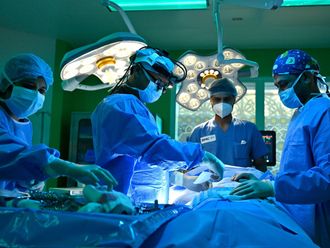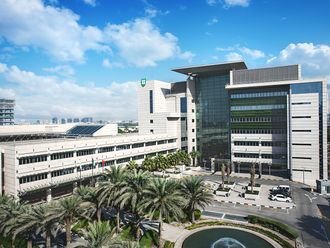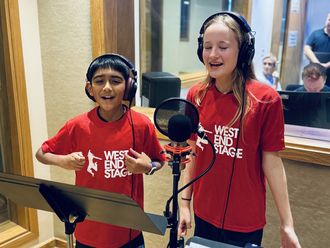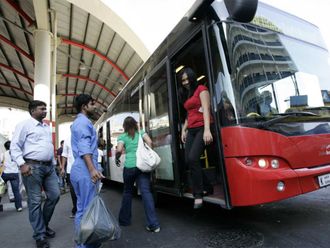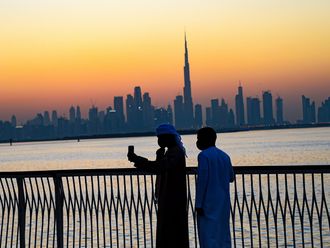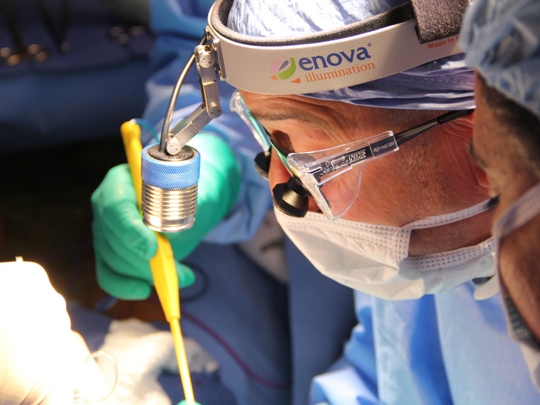
Abu Dhabi: The first double-lung transplant has been performed in the UAE at the Cleveland Clinic Abu Dhabi.
Multi-disciplinary teams of surgeons in the capital also performed three other transplant surgeries with organs from the same deceased donor, saving four lives on the same day. The transplant surgeries took place on June 10, and all recipients are currently recovering well, the Cleveland Clinic revealed on Sunday.
As reported by Gulf News, Cleveland Clinic Abu Dhabi, the country’s first multi-organ transplant centre, performed the UAE’s first lung transplant in February 2018, giving a 53-year-old Emirati patient a new lease of life with one lung taken from a deceased donor. The latest milestone in transplant surgeries in the UAE, however, saw both the recipient patient’s lungs removed and replaced with donor organs during a single surgery.
The recipient, a 45-year-old expatriate female, had been suffering from idiopathic pulmonary fibrosis, a progressive disease that causes extensive scarring of the lungs. The condition is incurable and patients are typically given a three- to five-year survival rate after diagnosis without transplant surgery.
“In the case of this patient, the lungs were as hard as rocks and she had been confined to a wheelchair for years, dependent on oxygen. The disease had also affected her heart function as the heart was not receiving enough oxygenated blood. In fact, when we asked the patient to stand to take a quick measurement, she was soon out of breath and needed to be oxygenated,” Dr Souilamas told Gulf News.
The patient had been on the transplant list for about a year, and among all matches for the donor organs, her condition was the worst.
“I doubt she would have survived another year without the surgery, and as soon as she was diagnosed, she was evaluated for a transplant,” said Dr Fadi Hamed, intensivist and lung transplant pulmonologist at the hospital.
Once the deceased donor’s organs were procured, the lung transplant was undertaken. At the same time, a surgical team led by Dr Antonio Pinna, transplant surgeon at the hospital’s Digestive Diseases Institute, also began the liver transplant for a female patient from Ras Al Khaimah who had been suffering from severe cirrhosis. In addition, one of the donor’s kidneys was transplanted into a patient on the hospital’s waiting list by a team led headed by Dr Bashir Sankari, chair of surgical subspecialties and head of the hospital’s transplant programme. The other kidney was transported for transplantation to a patient at the Shaikh Khalifa Medical City.
Dr Souilamas explained that the lungs must be the first organs to be transplanted since they act as a filter and barrier between the body and the external environment.
“In this case, all the transplant procedures took place within a day of us receiving the consent to harvest the donor organs. We started with the lung transplant, ensuring that the time between lung procurement and transplantation [ischemia time] was kept to just five-and-a-half hours. The other surgeries were also conducted simultaneously,” he said.
He added that the hospital expected to undertake about five to eight more multi-organ transplants by the end of the year.
“The success of this surgery means that Cleveland Clinic Abu Dhabi is now able to offer both single and complex double-lung transplants under its comprehensive multi-organ transplant programme. We are proud to provide such a high-level standard of healthcare to all people in the UAE, and to have achieved this milestone in less than three years demonstrates the remarkable progress that Abu Dhabi is making as a healthcare hub,” Dr Souilamas said.
“When we opened our doors in March 2015, we made a promise to bring advanced complex and critical care services to the UAE, removing the need to travel abroad for life-saving medical care. This latest multi-organ transplant marks another significant moment in that journey. It is also worth reflecting on the incredible contribution that the donor and the donor’s family have made by sharing their precious organs — four lives have been transformed by this selfless gift. We will continue to work with the relevant authorities to support the development of a nationwide transplant list and donor management network, so that more patients will be able to benefit from this life-saving opportunity,” said Dr Rakesh Suri, chief executive officer at Cleveland Clinic Abu Dhabi.
How a recipient is selected for organ transplant
Transplant centres in the UAE currently maintain a list of patients who need organ transplants, and they are constantly in touch with the UAE National Transplant Committee as well as other regional health regulators. Once consent is received to use a donor’s organs, the centre looks through its transplant list for a match.
There are many factors that are considered, including blood type, age, height and weight. Up to a 20 per cent difference in the criteria can be allowed for between donor and recipient.
The medical team then creates a score of each patient match’s disease progression, and the one with the worst condition is selected for transplant. In the case of a lung transplant for instance, the progression score includes blood gas, pulmonary function, effect on heart function, etc.
Organs are also matched with possible recipients in other transplant centres in the UAE and even regionally to ensure that the maximum number of lives is saved.


